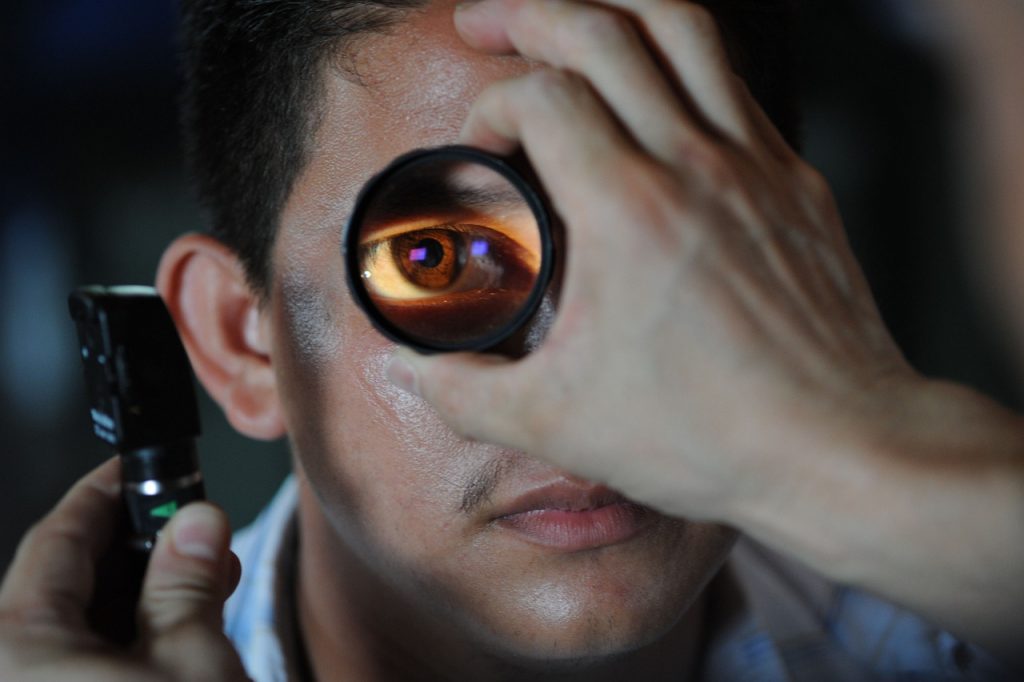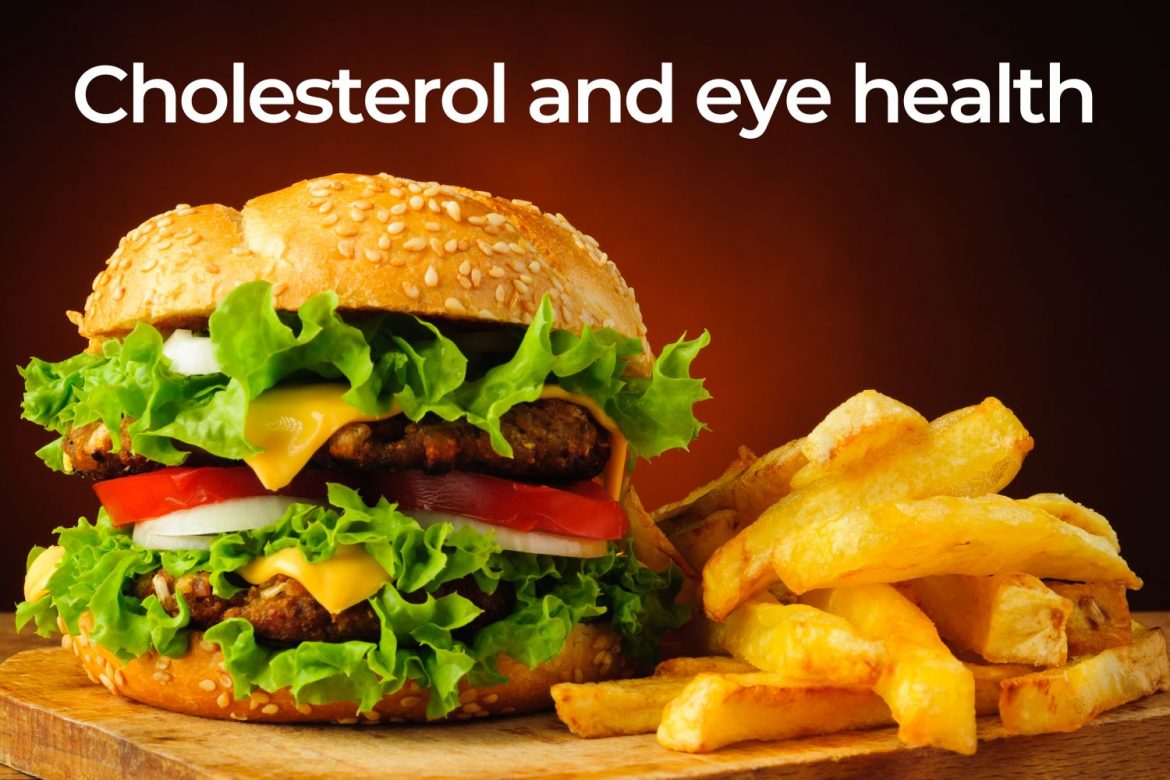![]()
Cholesterol is a crucial substance in the body and plays an important role in building cells and producing certain hormones. Cholesterol levels must be regulated carefully because high cholesterol can have a negative impact on various parts of the body, including the eyes.
We will look at the potential impacts of cholesterol and eye health including the effects, potential risks, and preventative measures.
Understanding cholesterol
Cholesterol is a lipid found in the blood, carried by lipoproteins. There are two main types: low-density lipoprotein (LDL) and high-density lipoprotein (HDL).
- LDL is often referred to as “bad cholesterol” because it can accumulate in the walls of blood vessels, leading to atherosclerosis. Atherosclerosis is characterized by narrowing and hardening of the arteries.
- HDL is known as “good cholesterol,” because it helps transport cholesterol to the liver to be processed and expelled from your body.
Cholesterol and the eye
Cholesterol may impact eye health in several different ways:
- Atherosclerosis
High LDL levels contribute to the buildup of plaques in blood vessels, including those in and to the eyes. These plaques can reduce blood flow and oxygen delivery to ocular tissues, leading to various eye conditions.
- Oxidative stress
Excess cholesterol can lead to increased oxidative stress, which damages cells and tissues in the body including the eye.
- Inflammation
Chronic inflammation is also associated with high cholesterol levels that affect blood vessels and tissues in the eye, increasing the incidence of conditions like AMD and diabetic retinopathy.
The eyes are particularly sensitive to changes in cholesterol levels. Various eye conditions have been linked to high cholesterol because the blood vessels in the eye include extremely small capillaries.
Cholesterol can deposit in the blood vessels of the eye and may contribute to the development of numerous conditions:
Arcus senilis
Arcus senilis is a common eye condition associated with aging that can also indicate high cholesterol levels. It appears as a gray or white arc around the cornea, the clear dome over the front part of the eye.
Though it does not impair vision, the arc is composed of lipid deposits that can signal underlying cardiovascular issues. In younger individuals, the presence of arcus senilis should prompt further investigation into cholesterol levels and cardiovascular health.
Xanthelasma
Xanthelasma refers to yellowish cholesterol deposits that appear as plaques on the eyelids. These deposits are not harmful themselves but serve as a visible indication of high cholesterol levels in the blood. Their presence is often associated with an increased risk of heart disease and warrants a thorough lipid profile assessment.
Treatment options include surgical excision, laser therapy, cryotherapy, and chemical peeling, although recurrence is possible. Managing systemic cholesterol levels through diet, lifestyle changes, and medication is crucial to prevent further deposits and reduce one’s cardiovascular risk.
Retinal vein occlusion
Retinal vein occlusion (RVO) is a condition where one of the veins in the retina becomes blocked by a blood clot and high cholesterol levels can contribute to the formation of these clots. RVO can lead to significant vision problems, including blurred vision and, in severe cases, blindness.
The goal of treatment is to manage symptoms, improve vision, and prevent further ocular complications. Patients may undergo intravitreal injections of anti-vascular endothelial growth factor (anti-VEGF) agents, such as ranibizumab or aflibercept, to reduce macular edema (swelling) and improve their vision. Corticosteroids may also be used for their anti-inflammatory effects. Laser photocoagulation may also be used to prevent neovascularization and reduce the risk of glaucoma.
Managing cholesterol levels is crucial in preventing this condition, particularly for those with other risk factors such as hypertension and diabetes.
Holdenhurst plaque
Holdenhurst plaques are cholesterol emboli that lodge in the retinal arteries inside the eye. They usually originate from atherosclerotic plaques in the carotid arteries. Their presence indicates potential systemic vascular disease and a higher risk of stroke or heart attack.
Holdenhurst plaques can cause transient or permanent vision loss if they block significant blood flow to the retina. They are often found when the arteries divide into multiple branches. If they are found in your eye, your doctor will recommend a thorough cardiovascular evaluation to identify and manage the underlying atherosclerosis and to reduce your risk of a severe vascular event through lifestyle modifications, medications, or surgical interventions.
Diabetic retinopathy
Diabetic retinopathy is a complication of diabetes that affects the eyes. It occurs when high blood sugar levels damage the retinal blood vessels, causing them to leak or become blocked. High cholesterol levels can exacerbate this condition by contributing to vascular damage. Managing both cholesterol and blood sugar levels is essential for preventing and managing diabetic retinopathy.
Preventative measures and management

Maintaining healthy cholesterol levels is key to maintaining your eye health.
Diet and exercise
Adopting a heart-healthy diet rich in fruits, vegetables, whole grains, and lean proteins can help manage cholesterol levels. Reducing your intake of saturated and trans fats is particularly important. Regular physical activity may be the most important factor in maintaining healthy cholesterol levels.
The Mediterranean diet, rich in fruits, vegetables, whole grains, nuts, and olive oil, is known for its heart health benefits, including cholesterol management. With an emphasis on healthy fats, monounsaturated fats from olive oil and omega-3 fatty acids from fish in particular, this diet helps lower low-density lipoprotein (LDL) cholesterol while maintaining or increasing high-density lipoprotein (HDL) cholesterol.
Medications
For those with significantly high cholesterol levels, medications such as statins may be prescribed. These drugs help lower LDL cholesterol and reduce the risk of cardiovascular and eye-related complications.
Statins work by inhibiting the enzyme HMG-CoA reductase, which plays a crucial role in the synthesis of cholesterol in the liver. By blocking this enzyme, statins reduce the production of cholesterol, particularly the bad type of cholesterol, LDL.
Regular eye exams
Routine eye examinations can detect early signs of cholesterol-related eye conditions. Dilated fundus examinations (DFE) or retinal photography can aid your eye doctor in making a diagnosis. If you have high cholesterol, you should have your eyes dilated and/or pictures of your eyes performed yearly. Annual monitoring and early intervention can prevent or minimize vision loss.
Managing other health conditions
Controlling other risk factors such as hypertension, diabetes, and smoking is essential for overall vascular health, including the health of the eyes.
Conclusion
The relationship between cholesterol and eye health is significant. High cholesterol levels can contribute to the development of various eye conditions, some of which can result in serious vision loss. Understanding the mechanisms linking cholesterol to eye health and taking proactive steps to manage your cholesterol levels can help protect your vision. Regular check-ups, a healthy diet and lifestyle, and appropriate medical interventions are key components for both cardiovascular and ocular health.

